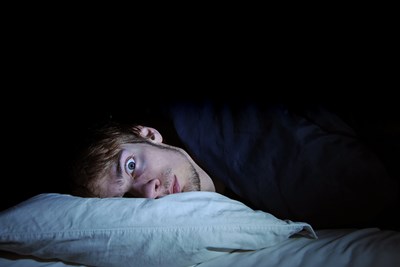Night terrors, or sleep terrors, are a parasomnia, distinctly different from nightmares. Nightmares are bad dreams and occur during the REM cycle (just as regular dreams do), while the body is in a state of paralysis and the brain is experiencing heightened activity. Night terrors, on the other hand, occur during the non-REM cycle, during the third stage (N3). Furthermore, night terrors are rarely remembered upon waking. Here’s a look at just what a person might do while experiencing night terrors.
Physical Symptoms
Night terrors generally occur about an hour or two after falling asleep, before the rapid eye movement cycle of deep sleep begins. Each episode may last as long as ten minutes or as few as one or two. While somewhere in the neighborhood of 15% of children may have night terrors, only a few small percentage of adults still experience them. The biggest difference in childhood and adulthood night terrors is that adults are more likely to become volatile or agitated.
Essentially, while still completely asleep, the individual will have a fit of pure terror. There may be screaming, yelling, or crying. They may sit up in bed and stare straight ahead, looking frightened. Or, they may begin thrashing or flailing around. The autonomic nervous system may be affected, causing the heartbeat to race, the skin to perspire, and breathing to quicken. This may be an unconscious response of the body’s “fight or flight” system.
Mental Symptoms
During a night terror, the person experiencing it is unlikely to have any awareness of their surroundings. Additionally, it may be extremely difficult to wake them up. Once awake, they will have very little awareness of the night terror having taken place. Embarrassment, confusion, or disorientation may be evident. It is not uncommon for other parasomnias, particularly sleepwalking, to co-occur. Some people report experiencing hallucinations of snakes, other animals, and even people in the room immediately after waking from a night terror.
Potential Complications
As with many parasomnias, night terrors may leave the individual feeling excessively tired during the day. If the sleep terror becomes a household event, this exhaustion may spread to the entire family. Although in general night terrors are not at all dangerous, they may become so because of the violent activity that can occur -- to the parasomniac themselves or to the individual trying to calm or wake them. Individuals with night terrors may find them very embarrassing, particularly during group overnight events, such as sleepovers or camping trips. Otherwise, there is very little that might be considered a “complication” of sleep terrors, although again, it is not unlikely for those with night terrors to sleep walk.



